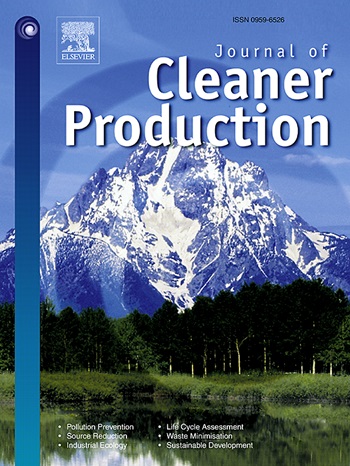Spatial network characteristics and influencing factors of the synergistic effects of pollution reduction and carbon emission reduction in “Zero Waste City” clusters
IF 9.7
1区 环境科学与生态学
Q1 ENGINEERING, ENVIRONMENTAL
引用次数: 0
Abstract
Investigation on the synergistic effects of pollution reduction and carbon emission reduction in Zero Waste City (ZWC) clusters can shed light on effective pathways for regional waste management collaboration and can provide new insights into regional pollution reduction and carbon emission synergy. Thus, focusing on the ZWC cluster in Shandong Province, China, this study calculates the pollution reduction and carbon reduction synergies for each city from 2013 to 2022. It also explores the structural characteristics and influencing factors of the spatial network of pollution reduction and carbon reduction synergies within the ZWC cluster. Results show the following: (1) During the research period, the synergistic effect of pollution reduction and carbon reduction is strengthened due to improvements in pure technical efficiency, a reduction in disparities between cities, and the gradual optimization of spatial patterns. (2) Jinan, Qingdao, and Weihai occupy dominant core positions within the collaborative network. The relationship between the provincial capital and the Jiaodong Economic Circle is well-balanced, while the Lunan Economic Circle exhibits a strong outward orientation, although with limited reciprocal feedback. (3) Geographic proximity, public attention, and differences in information technology foster the formation of the spatial relationship network, while government support disparities demonstrate the opposite effect. Economic disparities have a relatively considerable impact on relational promotion, whereas the influence of industrial structure is comparatively negligible. Based on the above conclusions, this study proposes strategies to enhance the synergistic effects of pollution reduction and carbon emission reduction in ZWC clusters by strengthening “zero waste” management and technology application, thereby optimizing the collaborative network of ZWCs and reinforcing multifactor cooperation.求助全文
约1分钟内获得全文
求助全文
来源期刊

Journal of Cleaner Production
环境科学-工程:环境
CiteScore
20.40
自引率
9.00%
发文量
4720
审稿时长
111 days
期刊介绍:
The Journal of Cleaner Production is an international, transdisciplinary journal that addresses and discusses theoretical and practical Cleaner Production, Environmental, and Sustainability issues. It aims to help societies become more sustainable by focusing on the concept of 'Cleaner Production', which aims at preventing waste production and increasing efficiencies in energy, water, resources, and human capital use. The journal serves as a platform for corporations, governments, education institutions, regions, and societies to engage in discussions and research related to Cleaner Production, environmental, and sustainability practices.
 求助内容:
求助内容: 应助结果提醒方式:
应助结果提醒方式:


